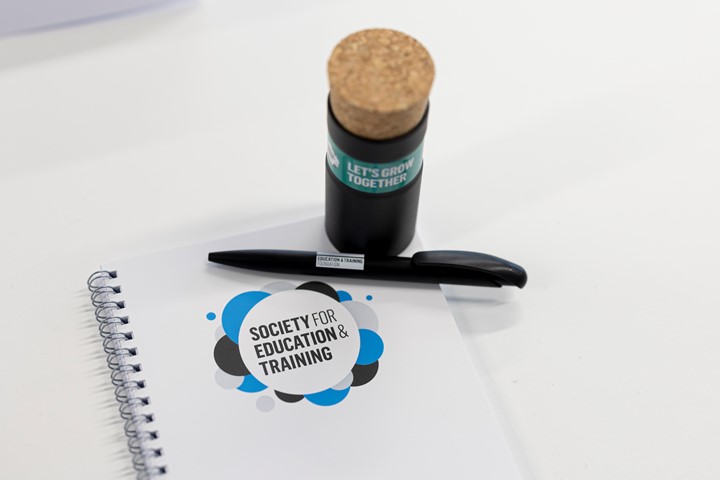The importance of cognitive load theory (CLT)
Lecturer and SET Fellow Dan Williams explains why there is one learning theory he feels all teachers should be aware of.
Cognitive Load Theory (CLT) - coined in 1988 by John Sweller, suggests that our working memory is only able to hold a small amount of information at any one time and that instructional methods should avoid overloading it in order to maximise learning (Sweller, 1988).
Why have I chosen this theory?
We’ve all been in learning sessions where the teacher has whizzed through the content, leaving us with little to remember. We’ve also been in sessions where the content is so complex that we leave more confused than when we entered. CLT goes some way to explaining why this happens and what we, as teachers, can do to maximise the learning of individuals within our classrooms.
Building on the work of Baddeley and Hitch (1974), CLT views human cognitive architecture as the working memory and long-term memory. Put simply, the working memory has a limited capacity and consists of multiple components that are responsible for directing attention and coordinating cognitive processes. Long-term memory, on the other hand, has an endless capacity for storage and works with working memory to retrieve information (Baddeley, 2003).
What can teachers do to reduce cognitive load?
Activate prior knowledge before sharing new information with students: Our long-term memory is said to have a number of organised patterns of knowledge (known as 'schema'). Each schema acts as a single item in working memory, so can be handled easier than having lots of new, isolated information. Through retrieving information from the long-term memory via quizzes, visual aids and discussions, students can bring crucial information to working memory (see image 1) and assimilate new information to build upon what they already know (Baddeley, 2003).
Activating prior knowledge is also supported in the work of Marzano, Gaddy and Dean (2000), who found a substantial improvement in achievement (0.59ES). Furthermore, retrieval practice has shown to strengthen our retention of the information (Wenger, Thompson and Bartling, 1980) - a win win!
Long Term Memory Working Memory
Use visual and verbal information to present information to students: This has nothing to do with the infamous ‘learning styles’, rather empirical research suggests that our working memory has two points of entry (Chandler and Sweller, 1992). One accepts auditory information, whilst the other visual. If the auditory and visual information correspond to one another, then the burden on working memory is far less than using one pathway alone. Image 1 shows the effect of using one pathway to working memory, whereas image 2 shows the use of both. However, please note that if the text and visual information are not clearly integrated, then it could have adverse effects on learning (Chandler and Sweller, 1992).
Working memory
Use worked examples and models to support learning: There are a wealth of studies that have shown the positive impact of using worked examples to enhance learning (Chandler and Sweller, 1991). According to Clark, Nguyen and Sweller (2006, p.190), ‘a worked example is a step-by-step demonstration of how to perform a task or how to solve a problem’.
These steps provide learners with direction and support to create mental models of how to tackle a problem/task, or what ‘good’ looks like. Discovery or problem-based learning, on the other hand, can be burdensome to working memory due to learners having insufficient prior knowledge to draw upon to support their learning. Moreover, the vast amount of information they have to consider in completing work independently can result in a struggle to direct their attention. As learners develop a greater understanding of the topic, elements of the worked or modelled examples can be ‘faded’ (removed) to foster greater independence.
Worked example for speed, distance, time problem
In summary, regardless of one’s education philosophy, I argue that all teachers need to have an awareness of the potential benefits and limitations of the ways in which they present learning opportunities for learners. CLT and the associated empirical research provides us with an understanding of how we process, organise and store information most effectively, and for this reason, all teachers should acquire a basic understanding of the premise.
Dan Williams is a Lecturer in Post 14 Teacher Training at the University of Derby. He is also a Board Member and Trustee of the ETF and Chair of the SET Management Board. His interests include educational research, specifically classroom based experiments and cognitive psychology.
References
- Baddeley, A.D. (2003). Working memory: looking back and looking forward. Nature Reviews Neuroscience, 4, p.829-839.
- Baddeley, A.D. and Hitch, G. (1974). Working Memory. Psychology of Learning and Motivation, 8, p.47-89.
- Chandler, P. and Sweller, J. (1991). Cognitive Load Theory and the Format of Instruction. Cognition and Instruction, 8 (4), p. 293-332.
- Chandler, P. and Sweller, J. (1992). The split-attention effect as a factor in the design of instruction. British Journal of Educational Psychology, 62 (2), p.233–246.
- Clark, R.C., Nguyen, F. and Sweller, J. (2006). Efficiency in learning: evidence-based guidelines to manage cognitive load. San Francisco: Pfeiffer.
- Marzano, R.J., Gaddy, B.B. and Dean, C. (2000). What works in classroom instruction. Aurora, CO: Mid-continent Research for Education and Learning.
- Sweller, J. (1988). Cognitive Load during Problem Solving: Effects on Learning. Cognitive Science, 12, p.257-285.
- Wenger, S.K., Thompson, P. and Bartling, C.A. (1980). Recall facilitates subsequent recognition. Journal of Experimental Psychology: Human Learning and Memory, 6 (2), p.135-144.






